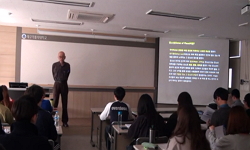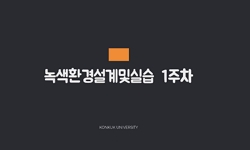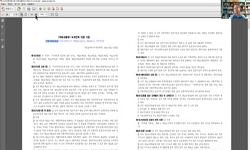In our society, because every aspect of design problems has a close relationship with human beings, society, and the environment, we need to use more than one approach in order to solve them. In addition, industry changes and economic recession push t...
http://chineseinput.net/에서 pinyin(병음)방식으로 중국어를 변환할 수 있습니다.
변환된 중국어를 복사하여 사용하시면 됩니다.
- 中文 을 입력하시려면 zhongwen을 입력하시고 space를누르시면됩니다.
- 北京 을 입력하시려면 beijing을 입력하시고 space를 누르시면 됩니다.

환경디자인의 공공적 특성 연구 -서울역 7017 프로젝트를 중심으로- = The Characteristics of Publicness in Environmental Design -Focus on Seoul Station 7017 Project-
한글로보기https://www.riss.kr/link?id=A102575281
- 저자
- 발행기관
- 학술지명
- 권호사항
-
발행연도
2016
-
작성언어
-
- 주제어
-
KDC
600
-
등재정보
KCI등재
-
자료형태
학술저널
- 발행기관 URL
-
수록면
39-48(10쪽)
-
KCI 피인용횟수
2
- DOI식별코드
- 제공처
-
0
상세조회 -
0
다운로드
부가정보
다국어 초록 (Multilingual Abstract)
In our society, because every aspect of design problems has a close relationship with human beings, society, and the environment, we need to use more than one approach in order to solve them. In addition, industry changes and economic recession push to regeneration of places rather than new developments. Old factories, disused railroads, and high-level roads and the areas around them become new places. The design problems of these areas cannot be solved using one specific discipline. We must discover new design approaches. The new design paradigm also pushes us to change typical design divisions and integrate design fields. Professions, such as product design, interior design, architecture, landscape architecture, and urban design, also suggest integration with the environment, considered to be environmental design. The discipline of environmental discipline involves interdisciplinary approaches, and its design process is systematic and holistic. We therefore need to reconsider environmental design terminology, categories, and characteristics. In the 1960s, the terminology of environmental design came into being and gradually encompassed human behavior, psychological interaction, physical conditions, sociological affects, and ecological considerations for the quality of human life. This study reconsiders environmental design`s definition and investigates the characteristics of publicness in environmental design. (Method)First, this study reviews the concept of environment design with affordance for the environment and publicness. Second, through literature review, publicness-related studies are investigated. Then, the review adopts change in the publicness concept through recent studies. The research methodology employs case study. The Seoul Station 7017 project was selected as an environmental design project. Data collections was conducted at the beginning period of the project, during the master plan, and after construction using the Seoul Station 7017 website and The Seoul Institute`s operation/maintenance plan. The collected data was analyzed according to the characteristics of publicness. (Results)There was a lack of a public hearing about the construction in the beginning period of the project in terms of participatory design. However, the master plan was well accomplished in relation to the characteristics of publicness. Regarding the plan for the period after construction, since the project involved the characteristic of sustainability, the participator governance does not yet exist but should have been formed during the beginning period of the project by the Seoul Institute paper. (Conclusions)The result contributes to the investigation of the characteristics of publicness in environmental design to ensure quality of human life. The study`s results depict the role of the characteristics of publicness in the public spaces of interior and architecture environments as well as parks and urban design environments.
참고문헌 (Reference)
1 민병욱, "지속가능한 조경설계에 있어서 생태미학적 접근" 한국조경학회 40 (40): 38-48, 2012
2 정상혁, "지속가능성을 위한 도시설계 가이드라인의통합화에 관한 연구" 성균관대학교 대학원 2014
3 권영재, "장소기억을 활용한 공공적 장소성 구축에 관한 연구" 한국공간디자인학회 11 (11): 79-93, 2016
4 김종찬, "서울시 대형 경기장 외부 유휴공간의 공공성확보를 위한 공공성 평가 연구" 한국공간디자인학회 8 (8): 83-90, 2013
5 김현석, "서울시 공공디자인 정책분석으로 본 공공디자인연구(2008-2010년 디자인서울총괄본부 사업을 중심으로)" 한국디자인학회 25 (25): 28-38, 2012
6 김은아, "도시디자인과 공공성의 시대적 의미변화- 도시 해석을 중심으로 -" 한국디지털디자인학회 8 (8): 477-486, 2008
7 신민수, "도시 외부공간의 공공성 실현을 위한 공간구현에 관한 연구 : 2000년대 이후 진행된 공공공간 Project를 중심으로" 홍익대학교 대학원 2010
8 류수미, "도시 공공건축물 옥상조경공간의 공공성 평가에따른 이용 활성화 방안 연구" 서울시립대학교 2015
9 최혜영, "공론과 커뮤니티 형성을 통한 단계적 참여 설계 - 뉴욕 거버너스 아일랜드 공원 및 공공 공간을 중심으로 -" 한국조경학회 44 (44): 11-24, 2016
10 Lee, yeonsook, "The Qulity of Lfe and Environmental Design" Yeonsei University Press 1998
1 민병욱, "지속가능한 조경설계에 있어서 생태미학적 접근" 한국조경학회 40 (40): 38-48, 2012
2 정상혁, "지속가능성을 위한 도시설계 가이드라인의통합화에 관한 연구" 성균관대학교 대학원 2014
3 권영재, "장소기억을 활용한 공공적 장소성 구축에 관한 연구" 한국공간디자인학회 11 (11): 79-93, 2016
4 김종찬, "서울시 대형 경기장 외부 유휴공간의 공공성확보를 위한 공공성 평가 연구" 한국공간디자인학회 8 (8): 83-90, 2013
5 김현석, "서울시 공공디자인 정책분석으로 본 공공디자인연구(2008-2010년 디자인서울총괄본부 사업을 중심으로)" 한국디자인학회 25 (25): 28-38, 2012
6 김은아, "도시디자인과 공공성의 시대적 의미변화- 도시 해석을 중심으로 -" 한국디지털디자인학회 8 (8): 477-486, 2008
7 신민수, "도시 외부공간의 공공성 실현을 위한 공간구현에 관한 연구 : 2000년대 이후 진행된 공공공간 Project를 중심으로" 홍익대학교 대학원 2010
8 류수미, "도시 공공건축물 옥상조경공간의 공공성 평가에따른 이용 활성화 방안 연구" 서울시립대학교 2015
9 최혜영, "공론과 커뮤니티 형성을 통한 단계적 참여 설계 - 뉴욕 거버너스 아일랜드 공원 및 공공 공간을 중심으로 -" 한국조경학회 44 (44): 11-24, 2016
10 Lee, yeonsook, "The Qulity of Lfe and Environmental Design" Yeonsei University Press 1998
11 Kim, Sehun, "Public, Mimesis"
12 Jon, Lang, "Creating Architectural Theory" Kukjae 2003
동일학술지(권/호) 다른 논문
-
에드워드 렐프의 장소 정체성에 관한 문화 경관론적 고찰 연구 -소셜 미디어 네트워크 환경의 사회문화 활동을 중심으로-
- 한국공간디자인학회
- 박미성 ( Misung Park )
- 2016
- KCI등재
-
사인시스템 가시성능 측정을 위한 다차원 경로가시도 지표 및 분석기술개발 -종합병원 외래부 진료동선을 대상으로-
- 한국공간디자인학회
- 김석태 ( Suktae Kim )
- 2016
- KCI등재
-
페어 마케팅 커뮤니케이션을 위한 전시 디자인 방법 연구
- 한국공간디자인학회
- 김영욱 ( Youngwook Kim )
- 2016
- KCI등재
-
뵐플린을 통해 본 전시연출 장면의 점유력과 유인력에 관한 연구
- 한국공간디자인학회
- 오선애 ( Sunae Oh )
- 2016
- KCI등재
분석정보
인용정보 인용지수 설명보기
학술지 이력
| 연월일 | 이력구분 | 이력상세 | 등재구분 |
|---|---|---|---|
| 2022 | 평가예정 | 재인증평가 신청대상 (재인증) | |
| 2019-01-01 | 평가 | 등재학술지 유지 (계속평가) |  |
| 2016-01-01 | 평가 | 등재학술지 선정 (계속평가) |  |
| 2015-06-01 | 학술지명변경 | 외국어명 : Journal of the Korea Intitute of the spatial design -> Journal of Korea Intitute of Spatial Design |  |
| 2015-01-01 | 평가 | 등재후보학술지 유지 (계속평가) |  |
| 2013-01-01 | 평가 | 등재후보 1차 FAIL (등재후보1차) |  |
| 2012-01-01 | 평가 | 등재후보학술지 유지 (기타) |  |
| 2011-01-01 | 평가 | 등재후보 1차 PASS (등재후보1차) |  |
| 2009-01-01 | 평가 | 등재후보학술지 선정 (신규평가) |  |
학술지 인용정보
| 기준연도 | WOS-KCI 통합IF(2년) | KCIF(2년) | KCIF(3년) |
|---|---|---|---|
| 2016 | 0.47 | 0.47 | 0.53 |
| KCIF(4년) | KCIF(5년) | 중심성지수(3년) | 즉시성지수 |
| 0.51 | 0.52 | 0.692 | 0.28 |





 KCI
KCI KISS
KISS






